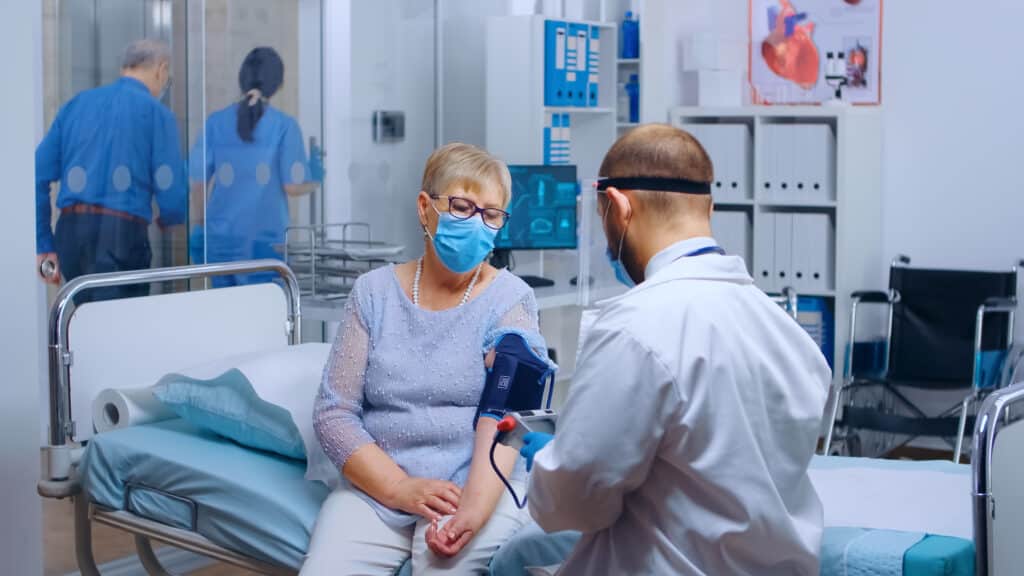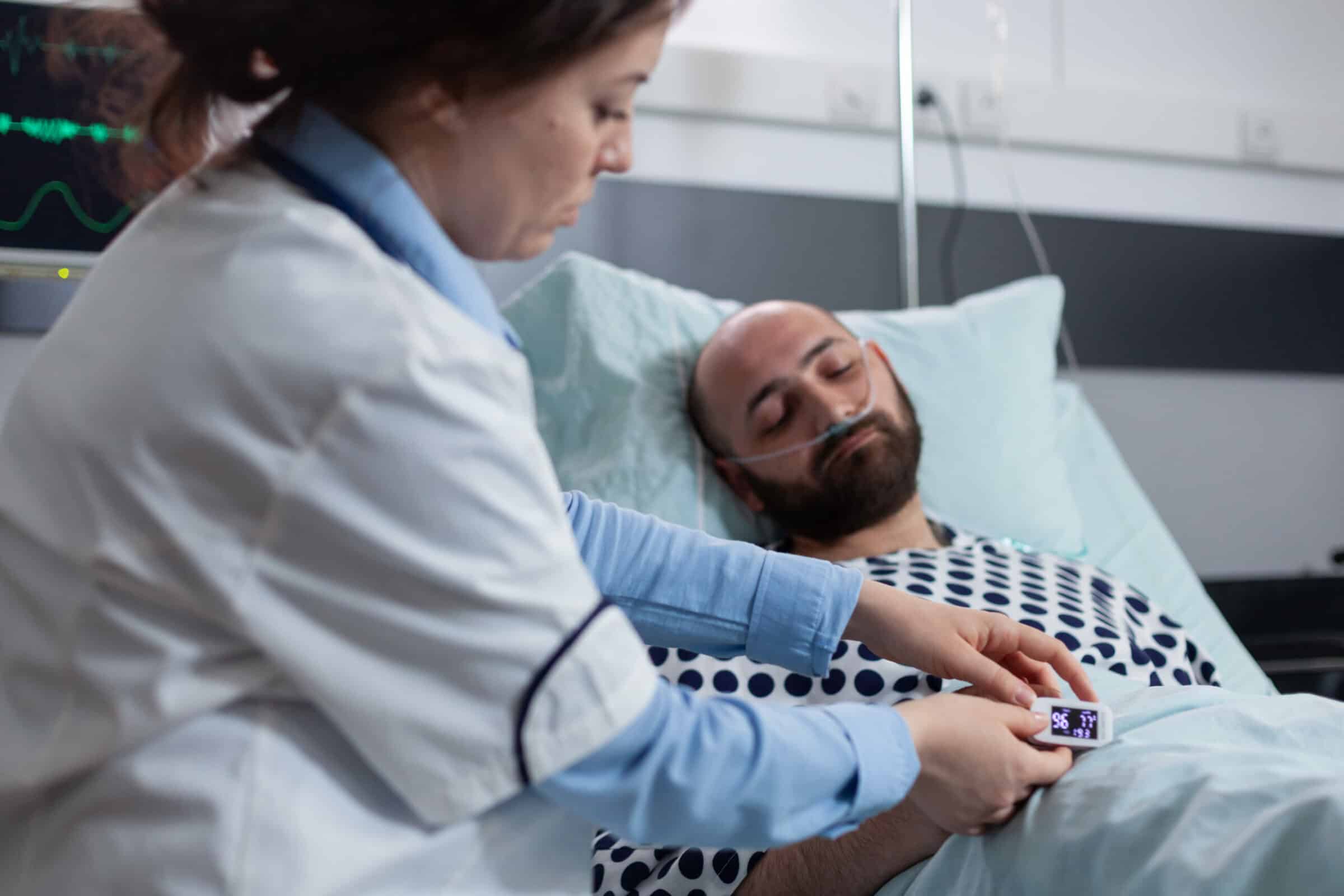While it may not always be the conversation in the limelight, connectivity in healthcare is of the utmost importance in providing improved health outcomes and efficient care.
Through IoT (Internet of Things) technology within health monitoring solutions, healthcare professionals can keep track of vital health data in order to monitor health trends, reduce costs, and provide better treatment for patients.
Health monitoring solutions have a wealth of applications, such as tracking and monitoring patients and doctors within a hospital, drug administration, and measuring essential health information, such as body temperature, blood pressure, glucose levels, and heart rate.
The different types of health monitoring solutions can be broken down into three main categories: physical health monitors, remote patient monitors, and digital health applications.
These health monitoring solutions are designed to be secure, reliable, and easy to use in order to ensure accuracy and safety in health care. But what are the differences between these health monitoring solutions?
In this post, we’re going to look at the three types of health monitoring solutions in more detail. Keep reading to find out more.
Physical Health and Welfare Monitors
The first health monitoring solution we want to talk about is physical health monitors. This type of health monitoring device collects and records health data from the patient in real-time, such as heart rate, temperature, blood pressure and other vital signs.
Physical health monitoring devices are typically small and portable, making them easy to carry around for health professionals when they need to monitor patients’ health remotely.
They come in a variety of sizes and shapes, with blood pressure cuffs, glucometers, pulse oximeters, and ECG Stethoscopes being common examples. Of course, most medical professionals rely on their tried and trusted methods, but IoT technology is providing greater availability and storing of data from approved medical devices for reflection and review in secure environments.
New technologies are also allowing easier ways to measure and analyse data to look for common problems. For example, devices that analyse heart rhythms using finger-tip pressing on a device can establish some irregular patterns more quickly than long-term recording.
Medical vs. Consumer Devices
It is important to make the distinction between medical devices and consumer devices in this environment.
Medical devices are not only tested in trials prior to approval, but their providers must produce significant risk assessments and prove adherence to the necessary medical device operational processes to ensure ongoing quality of design and supply.
Consumer devices, on the other hand, are intended to be used independently by the user for their own personal information. Where lines can become blurred is where consumer devices such as wearables are tested as part of research or information-gathering programs, but are not used for individual diagnosis or treatment.
Bedside Monitoring Systems
Bedside monitoring systems in care homes and hospitals are another, larger type of physical health monitoring solution that provides health professionals with health-related data from a patient’s bed. These types of solutions also include new, passive technologies that look after the welfare of the patient, including fall, carer id and intruder detection.
These types of systems use sensors that use detection technologies, connect to devices carried by care providers or are connected to computers, routers, gateways or mobile devices, to collect and store health data in a secure way for health practitioners to review.
Again, these are governed by the rigours of industry standards and depending upon their intended purposes and the vulnerability of users, may fall into the category of medical devices or alternatively, social or telecare quality evaluation industry standards or programs that are used to assess risks and the surrounding issues that can affect such life-critical services.
This is especially important as many such systems are implemented by regional government councils that have a duty of care to their patients or residents.
Commercialisation of Sensors
One of the main recent innovations is around the types of sensors and their commercialisation. For example, passive radar is now being used to provide fall detection and more sophisticated access and monitoring systems that correlate individual carers with other location-based data.
Wearable health monitors are also becoming an increasingly popular health/care monitoring solution, as they monitor a person’s vital signs like heart rate and oxygen saturation in innovative and unobtrusive ways (but many are not yet officially classed as medical devices).
They are also increasingly providing protection for care providers who are classed as vulnerable lone-workers, by providing GPS tracking and emergency call/distress buttons.
Another area of innovation is artificial intelligence (AI) technologies. AI is increasingly being used to analyse patterns or imagery to spot potential problems such as abnormal skin changes.
AI is also becoming more important in analysing the holistic environment for users. As more sensors and systems are deployed, the opportunity to analyse anonymised patterns and routines, means that problems that normally go unnoticed or are immeasurable at the local level can be analysed and patterns presented for further analysis and action.
Remote Patient Monitors
Remote patient monitors are systems that allow healthcare professionals to monitor a patient’s health from a distance through a wireless connection.
Wireless health monitors are becoming increasingly popular health monitoring solutions due to their convenience and accuracy, as they allow health professionals to monitor patients’ health and vital signs in real time without having to be onsite with them.
These systems use sensors attached to the body and are most commonly used with elderly, disabled, or chronically ill patients who are unable to visit a healthcare provider in person. These sorts of systems, however, will also need to come with a support plan and risk assessments.
While this might seem like a depersonalised service, the use of approved vital sign monitors, manufactured by specialist medical equipment providers can greatly increase the level of monitoring available for patients. While there is no real replacement for face-to-face care, it is especially important to widen the window of observation given the resource pressures that constrain health services.
Remote monitoring systems can therefore make it possible for healthcare professionals to effectively monitor and diagnose health issues, administer medication, review effects and ongoing outcomes and provide subsequent coordinated health advice to patients remotely.
Much like the bedside monitors used in hospitals and care homes, remote patient monitors can be used to track health information, such as body temperature, heart rate, oxygen levels, and blood pressure. Given the risk and vulnerability of persons being left in their homes, these are likely to need to be classed and approved as medical devices. This is even more the case if they are monitoring vital signs.
Healthcare Solution Amongst Social Issues
Increasingly, social issues that also affect the health of vulnerable persons are also coming to the fore. For example, fuel poverty and invasive mould. IoT is helping to form part of a wider health and social care plan, by providing opportunities to monitor those who are struggling to keep warm or are at risk from airborne irritants and contagions.
As many older persons move into social housing or facilities, their security is also a paramount concern. Vulnerable persons rely on their caregivers who need frequent access to their homes and rooms.
IoT technology is also enabling caregivers to be identified and provided access to these key facilities. This is especially important when cognitive impairment, decline or physical weakness can make already vulnerable persons even more vulnerable to malign actions or attacks.
Digital Health Applications
The last health monitoring solution we would like to discuss is digital health applications.
This type of health monitoring system allows healthcare professionals to monitor a patient’s health through their smartphone or tablet devices. Many individuals suffer from health or wellness issues that require a change in habits or lifestyle.
The benefit of these systems is that they allow a degree of interactivity between healthcare professionals and users based on the devices they rely on and tend to use on a daily basis.
Digital health applications are therefore becoming increasingly popular health monitoring solutions for these types of programs, as they are easy to use and can be accessed from anywhere with an internet connection. They also allow GPs to suggest ways for individuals to change their physical and mental outlook, with support systems in place to help monitor and review.
These digital health apps also have a variety of other features that can help health professionals manage their patient’s health more effectively, such as wellness programs, medication reminders, real-time health updates, and diet-tracking tools. For example, ‘prescribing’ lifestyle changes or improvements.
Wearables as Monitors
Although they could be regarded as physical health monitors, wearables, such as Fitbits and Apple Watches, are becoming increasingly popular health monitoring solutions as they are often more affordable and acceptable (less stigmatised) for certain types of users.
Of course, the problem with some of these devices and applications is that they are not medical devices and are as a result caveated as only background indicators. They can produce results that worry users and are as a result presented as evidence for GPs as significant problems that may not be significant or medical in nature, further straining already strained resources.
These health monitor wearables, however, can track health data such as heart rate, steps taken, and sleep patterns, making them a convenient way for users to monitor their health and well-being in a non-invasive and positive way if used constructively.
Wearable health monitors are also great for those tracking fitness goals (https://ieeexplore.ieee.org/abstract/document/6096926, 2011), and helping health professionals provide health advice to their patients remotely.
These types of wearables require miniaturisation and low-power solutions. Connectivity is, therefore, often embedded. These devices also make use of Bluetooth to connect to smartphones to provide a more inclusive and flexible environment for sharing data.
Discover IoT’s Potential with Caburn Telecom
Whether it’s in a hospital, care home or through wearable health monitors, it’s hard to deny that these health monitoring solutions are revolutionising the healthcare industry and making it easier for health professionals to provide quality health care.
With this technology, health professionals can detect health issues sooner and provide preventative advice more accurately, ultimately leading to better health outcomes for their patients.
Are you looking to introduce health monitoring solutions, or any other IoT solution, into your organisation? Then you’ve come to the right place.
Caburn Telecom is an industry leader in the Internet of Things, offering a wealth of IoT Solutions across numerous sectors. Our experience in the healthcare industry is unparalleled and we are committed to providing health professionals with the best health monitoring solutions available.
We also provide an array of other IoT services, such as secure communication networks and IoT SIM management, allowing us to tailor our services to meet your specific health monitoring needs.
If you’re interested in learning more about health monitoring solutions or any other IoT solution, contact a member of our team today.



